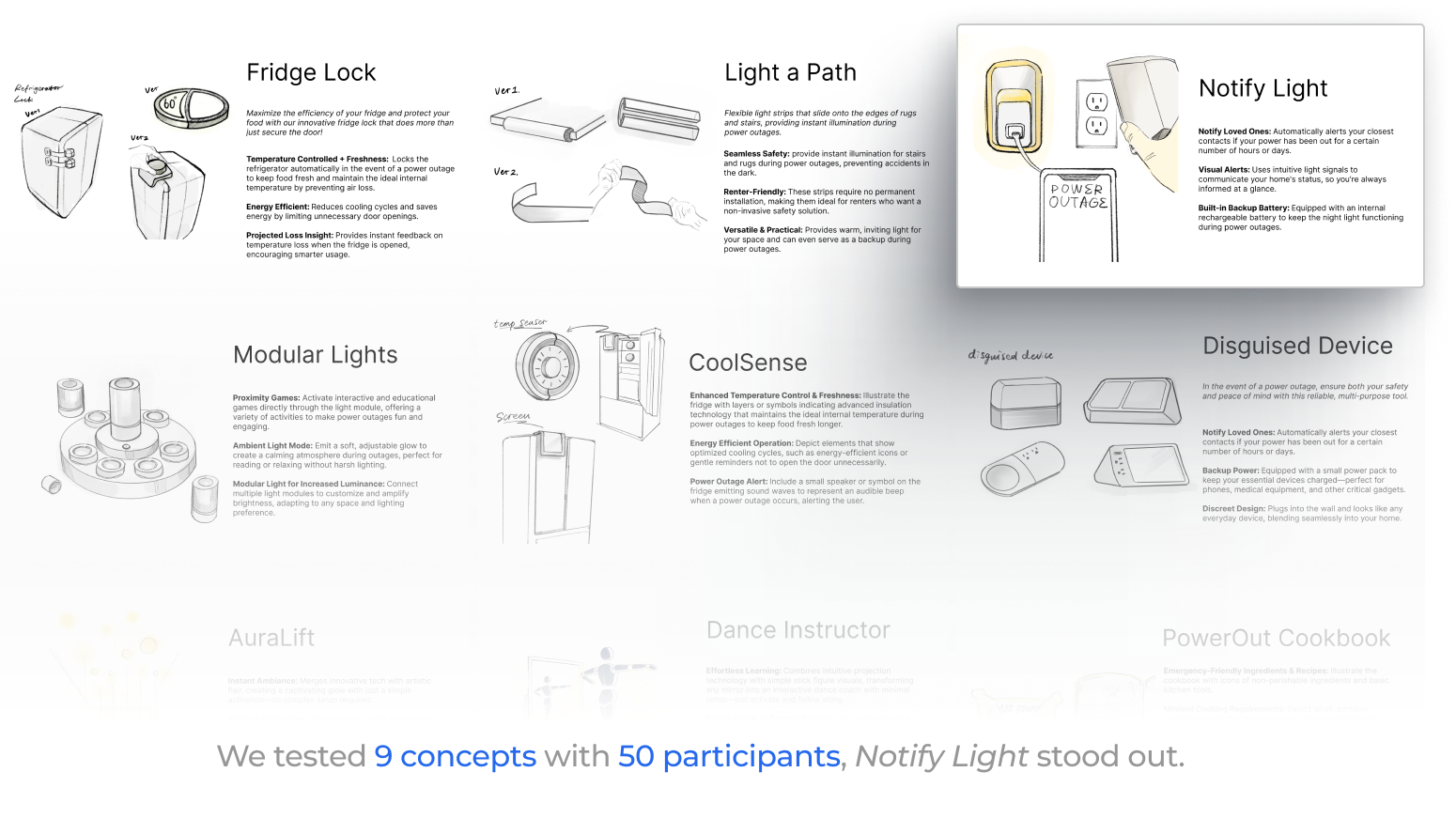

This product was designed as part of the Integrated Product Development (IPD) course at University of Michigan. The challenge was to design and develop a product that deal with power outage.
“As cross-disciplinary design and development teams, how might we help people deal with
electrical power outages, to ensure that basic needs can be met, inconveniences of the
disruption are reduced, and/or possible benefits of the situation are leveraged or
embraced.”
Check our final deliverable here:
 Check out
Check out
Industrial Design
3D Modeling
Rendering
Web Design
Product Manger: David Cox
R&D: Garima Mazumdar
Brand & Product Designer:
Maggie Kirkman
Lecturer: Ross School of Business, Erika Block
Lecturer: Stamps
School of Art and Design, Bruce Tharp
Fall 2024 | 15 weeks
Problem
How might we help people deal with electrical power outages, ensure that basic needs are met, reduce the inconveniences of disruption, and embrace potential benefits of the situation?
A community care system
Families and individuals
To keep people safe, connected, and supported
Monitor outages, enable communication, and foster community aid
Final Design
 Check out
Check out





Impact
The trade show was a 3-day competition organized by the Ross School of Business, University of
Michigan, featuring both a virtual and in-person segment. 4 teams competed,
attracting visitors, judges, industry investors, and entrepreneurs from various sectors.
Attendees were given $200 in "trade-show money" to vote and purchase products, with the team earning the highest profit declared the winner. To stand out, we developed tailored marketing and branding materials, along with promotional content and advertisements, to draw a larger audience and increase purchases

Research

We began by conducting 50+ user interviews with individuals who have experienced power outages in Michigan. These conversations focused on understanding their emotions, challenges, and priorities during such events, providing a wealth of firsthand accounts.

After the summarizing the primary research, we got following insights:

Ideation
To guide our vision, we established a team branding style scale, ensuring the design maintained a cohesive and approachable tone throughout the process.
Then, we created an inspiration board that visually captured our design aspirations and user-centric focus.

Testing
We sent out a survey to 50 people, asking them to rate their purchase interest on a scale from one to ten. From the responses, we found that the "Notify Light" concept scored the highest.

We applied the reverse brainstorming, which helped us critique and evaluate collaboratively. We pinpointed areas where the idea could be improved, and ways to address these limits effectively.

Since we’re designing a product that combines software and hardware, we needed to ensure it’s technically feasible. Through research, Garima and David figured out how to use APIs and other key technologies to bring it to life.

I worked closely with Maggie. She used Rhino for modeling, while I
rendered the scenes in Blender. David focused on researching the product’s internal
structure. We experimented with different textures and shapes, iterating on our design.
Through design reviews and peer feedback, we refined and finalized the solution.

Target Market
Unique Value Proposition
Pricing Strategy
In conclusion, this project was an absolute marvel to be a part of. Rarely does one get the opportunity to engage with the entire product development cycle, from ideation to delivering a working MVP. This experience taught me the critical value of collaborating within a cross-functional team, working alongside developers, visual designers, product managers, engineers, and artists.
Integrate additional app functionalities, such as predictive outage alerts and energy-saving
modes, to enhance the product's value.
Conduct a pilot launch in targeted regions to gather real-world user feedback and
refine the design further.